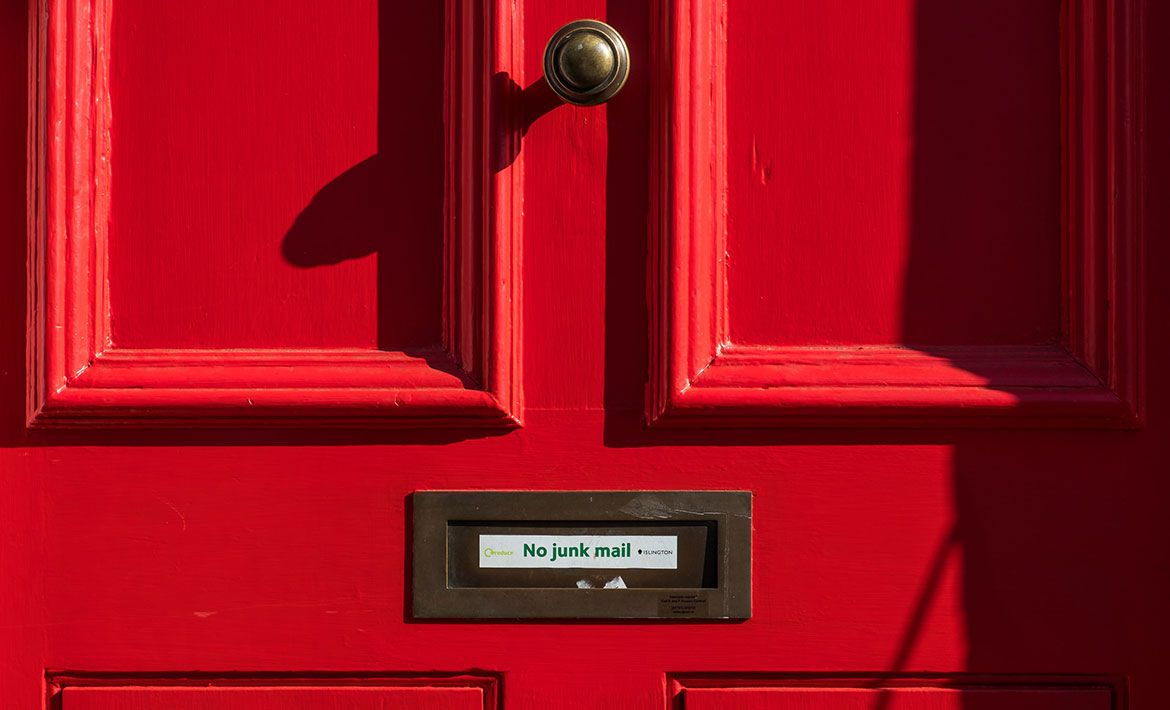As a B2B sales person, cold emails can be tricky. ?
Does the opening line grab the reader’s attention with personalization? Is the introduction specific enough? Have you made your product pitch suitably sexy and alluring? All those technicaties around your domain and avoiding the spam bin… did you even take them into consideration? At the end of the day, you want your cold email to be delivered, opened, read, and especially replied to.
On the one hand, cold emails can be a goldmine ? for brand new customers. On the other, they can end up being an awkward flop of a disaster; a waste of time and resources. ? Try and try again, but sending out hundreds of emails every day and receiving no replies only ever leads to one place: the Blacklist.
In this article, I managed to persuade several leading sales practitioners to give up their secret sauce. They shared their cold email tips, divulging the steps they take which make recipients reply with six of the sweetest words in sales outreach - “let’s get that call booked in!”?.
I asked them three questions about cold emails.
- What's the best approach to cold email personalization, and how do you break the ice?
- How do you transition from the icebreaker line to your product pitch?
- How do you eliminate the risk of cold emails being sent to spam?
But that’s enough from me.
I’d like to give up the floor to our experts from Amplemarket, Leadfeeder, SalesLabs, Lavender, TeamWorks, Gravy, and Outreach.io to share their secret cold emailing sauce, helping you break through the noise.

Filipe Brigas
Team Lead @AmplemarketFilipe Brigas is a Team Lead at Amplemarket, a one-stop shop for B2B sales teams. Innovating in the field of automating the sales process from lead generation to outbound sales and streamlining the Sales Pipeline for teams of all sizes. Consulting & finance & control background for 5 years. Love sports leveraging remote to learn how to surf.
— What's your best approach to cold email personalization and icebreaker line?
This is one of the most important questions for someone doing cold outreach. Your first sentence needs to intrigue readers to keep reading the rest of your email. People have short attention spans, so they must be hooked quickly. If your first line doesn’t do a good job here, you will most likely don’t get a reply.
Some generic best practices I like to follow:
- Be personal, as if you were writing a dedicated email just for that person.
- Use his/her name and another piece of information you know about the prospect. The more specific the better.
- Don’t talk about yourself. This is the time to grab the attention of your prospects.
?Here are a few examples per lead generation approach that I use:
- LinkedIn post interaction: “Hi {{first_name}}, I saw you {{interaction_type}} {{original_poster}} LinkedIn post (…)”
- Prospect recently changed jobs: “Hi {{first_name}}, I was doing a bit of research on {{company_name}} and saw that you have just recently joined (...)”
- Interest in common: “Hi {{first_name}}, did a bit of research and saw that you’re also a pizza cook!”
— What’s the best transition from the icebreaker line to your product pitch?
After you have grabbed the attention of the reader you need a smooth transition. Pick up a piece of information you used at the beginning of your email and use that to suggest the introduction of a problem you solve.
?Examples:
- LinkedIn post interaction: “I completely agree with what {{original_poster}} mentioned about the fact that (...). I would even add that at Amplemarket, we solved that challenge. (...)”
- Prospect recently changed jobs: “Is this change of roles also an opportunity to review your tech stack?”
- Interest in common: “When you cook pizza you know the importance of (...). The same also applies to your tech stack, (...)”
While in the first line of your cold email you had to find a piece of information that connects you and the prospect to grab his/her attention. In this part of the email you need to find a connection point between the piece of information you used, the problem you solve for, and the solution you present. Be creative, show them you have a good reason to be reaching out, and you did your homework about the problems he/she might be facing!
— How to eliminate the risk of getting cold emails to spam?
The best way to make sure your emails don’t land in spam is to not be marked as spam by any prospect. Of course, this will happen once in a while, but you should maximize your efforts towards this goal. The way to not having anyone marking you as Spam is to really make sure that you are contacting the right people, at the right time, with a relevant message.
- Relevant audience
- Relevant message
- Relevant timing
The way to make sure you fulfill these criteria is to have an outstanding lead generation process. Find an audience that is feeling a problem you solve for, write them a relevant message like I showed in the previous two questions, and try to understand if this is the right timing to talk about this with the prospect. For instance, when someone joins a new role with decision-making power, they will be reviewing internal processes and tools, so this is a great time to reach out!
The second most important thing you can do to eliminate the risk of Spam is to follow the best technical practices for email deliverability. Feel free to check the email deliverability guide on amplemarket’s website.
Here are some of the tips from NetHunt on how to get the attention of a prospect in a cold email.

Ethan O’Connell
Outbound Sales Manager @LeadfeederEthan is in charge of growing Leadfeeder's outbound sales team in the US and has been in tech sales for 5 years. If you want to learn more about Leadfeeder (or Ethan) connect with him on LinkedIn or find some time on his calendar.
— What's your best approach to cold email personalization and icebreaker line?
I would preface this by saying that there is no golden ticket or silver bullet when it comes to any cold outreach whether that is email, calls, or social. What I choose to put down completely depends on the situation- have they viewed our content, been on our website, have no idea who we are, etc.
My overall approach definitely involves a healthy balance of personalization and templates. It is important to balance this to make sure you aren’t writing emails from scratch all day, no one has time for that, but that you also aren’t just blasting out general fluff that no one will read. You want to make sure the email is engaging, but doesn't take too much time to put together.
?Here is an example of the balance I apply between fully templated and personalization:
Hi {{first_name}},
I saw on your LinkedIn that {{! ENTER RELEVANT DETAIL FROM LI PROFILE OR WEBSITE THAT SHOWS YOU DID RESEARCH}} and I would love to help you target your {{!CHOOSE RELEVANT ROLE/TITLE}} efforts more strategically.
At Leadfeeder we help companies everyday to- see where website traffic comes from, see how long those visits last, and see what they do while they are there. Based on what I understand about {{COMPANY NAME}}, we would make your life a lot easier…
I would love to show you an example of live data from our own website so you can see how our tool works and decide for yourself.
I have time {{ 2 weekdays from now}} afternoon. When works best for you?
Thanks in advance,
You can see I’m essentially leaving notes to myself within the email to fill it in like a madlib and make sure that the whole template flows in a way that makes it look like I wrote it just for that prospect. Even though I obviously didn’t.
— What’s the best transition from the icebreaker line to your product pitch?
You can also see in the example above that I jump right into my product pitch once I show them that I am not some robot and this exact email wasn’t also sent to 500 other people. I use a bulk of the email to frame my product in a way that (hopefully) peaks their interest and makes them want to click on that link or better yet book a demo with me. Then I end with a brief but direct CTA - it’s important not to give the CTA too much real estate as it doesn’t really add any substance even though it is a very important part of the email.
— How to eliminate the risk of getting cold emails to spam?
There are a few go to, but mostly unspoken, rules of email that I follow which i will list below:
- Use direct language, don’t say things like “I just wanted to…”. You should only use just in reference to things like time: “I just left you a VM…” and you don’t “want to…” you are. So instead of saying “I just wanted to check in” you could say “I am checking in on..”
- Limit links to 2 at most. Too many links in an email will make it stick out to spam filters and ends up looking sloppy anyway. And if you do include links ALWAYS put them into a word or phrase. Never put in raw links, that is messy and makes you look like a real rookie.
- Never include videos or GIFs, that makes the message size too large and will also flag spam filters. Linking out to videos is fine to do if they are a big part of your cold email strategy.
- Try to stay consistent with email “shape”- Basically try to make it look like a capital F. The intro and pitch are the bulk and make up the top parts of the F, then the CTA and anything else should be really short and at the bottom. The eye falls more naturally over this general shape and you are more likely to get people to actually read to the end.
- Avoid giving too many options especially in a CTA. “I have this time on this day or this time on this day available” that’s it, they don’t need your whole schedule. Same goes for sending along content/linking out to stuff (see #2).
Look up something called the choice paradox if you are interested in learning more about that, but essentially if people have too many choices they get overwhelmed and are less likely to make any choices at all. So even though it might feel like you are more likely to book a meeting if you give them 7 times, the effect is actually going to be the opposite.


Tara Horstmeyer
Former Director of Partner Success @GravyTara formerly built and led the Sales Development program and team at Gravy, where she spent her time in content, marketing and sales communication roles. Tara now writes, edits and consultants on everything from marketing to sales communication in a contract and freelance capacity for various companies and industries.
— What's your best approach to cold email personalization and icebreaker line?
The best way to break the ice for cold, outbound emails is to actually start with the basics before you write the first line. I like to call it the ABCs of Outbound:
A: Assess Your Who
Who ...is your audience?
CFO? Sales leader? Client success? A hiring manager? Get super clear on your “who.” A.k.a, know your audience like the back of your hand. And not only who they are, but what they need as it relates to them and your solution/product offering.
B: Break Down Your What
What ...do you want your prospect to do?
Now that you know the who, dive deep into the what. As in, what action do you want them to take when it’s all said and done?
C: Craft Your Why
Why ...are you reaching out?
Before you hit send, ask yourself why you are sending this communication. Why do you want them to take a certain action? And why should they want to reply?
Your opening icebreaker line should be completely tailored and relevant to the person reading it while allowing your personality to shine through. Most of all, it should 100% be about them. Remove every ounce of “I” and “we” and focus fully on showing your prospect you have taken the time to understand them first and foremost. This is when to move past generalities of personalization and into specifics of humanization.
Humans read emails; titles and companies don’t. Speak directly to the human behind the email.
— What’s the best transition from the icebreaker line to your product pitch?
Now that you have the ABCs down, the transition should continue the artful task of showing the prospect that you have done your research to know who they are and now are ready to answer their subliminal questions: “Why should I continue reading?” and “How can you help me be successful?”
As you move into your product pitch, hook the prospect in immediately by not telling them how great your product/service is, but how the product or service will make them great. Your entire pitch should bridge the gap between the points you added in your icebreaker line(s) to how your product or service can make that human better. Read and re-read your pitch in light of this.
— How to eliminate the risk of getting cold emails to spam?
The easiest way is to use tools available to make sure there aren’t spam triggers within your email or subject line. There are plenty of free tools and plugins. However, the most basic advice is often the most overlooked: Write emails as if they are written from you and by you. Write from a 1:1 mindset even as you craft 1:many.
It’s easy to classify emails written by a robot as spam; it’s much harder to do so if you’ve written yours as a human. This means…
- Check spam filtering software.
- Use correct spelling and grammar are intact
- Don’t use a ton of images
- Use your name as sender name
- Don’t send mass emails
Last but not least, make sure you are sending quality content that actually helps the prospect. This way, those who do receive it will be less likely to block you or mark your email as spam.
With all communication, it’s just as important how you say what you say as it is what you are saying. Whether over email, video, voice messages or more, show up as your authentic and genuine self. This will translate well over all mediums. Effective copywriting for sales is a skill that can be learned, and one that is a must for all professionals as the industry—and inboxes—get more and more crowded.
Every ounce of your communication should allow you to shine through. Be fun, relatable and knowledgeable as you pull in your reader into caring about what you are saying while also being drawn toward the person saying it—a.k.a., you!

Thibaut Souyris
CEO and Founder @SalesLabsFor the past decade, Thibaut’s been selling technology products, from SaaS to professional services and training/coaching programs. He works with SDRs, BDRs, AEs, and sales leaders who are tired of using the same old playbook to generate opportunities and drive new business. When he's not training and coaching tech sales reps, you will find me between Berlin, South of France, Switzerland and Mexico, enjoying a motorcycle adventure, spending time with my family, or DJing in Berlin’s clubs.
— What's your best approach to cold email personalization and icebreaker line?
When sending an email campaign, make your subject line short and ugly.
?For example, you can say something like “Made this for you” or “Check this out”. These are really small and ugly things that make your email opened more than just saying “Hey, {First Name}, here’s a solution for you”.
So, my main recommendation, make it short, ugly, and very specific.
Test your email subject lines, try not even use capital letters in your email subject line.
I do not recommend using “Re:” in your email as it looks like cheating, and everyone knows about this trick.
— What’s the best transition from the icebreaker line to your product pitch?
First off, do not pitch in your email, this is what I recommend. In your outbound sequence (whether it includes cold emails or calls) your job is to get an answer. It can be various, “yes”, “no”, or “may be”, and the idea is to get to those answers as fast as possible.
After your icebreaker line, I recommend using a trigger. A trigger is an indication that a prospect has a problem that you can potentially solve or interest in what you are doing. This is a good way to increase relevance.
?For example, if you are selling recruitment services, and a person visited your profile on LinkedIn, you can say “Hey, I noticed that you landed on my LinkedIn profile. I also noticed that you are hiring SDRs, I am curious if your customers are on LinkedIn?”
Then tease your prospects about the problem they have, instead of pitching.
?For example, I sell sales training mostly on LinkedIn, and as a trigger I would say “Hey, noticed you landed on my LinkedIn profile. I am curious, are your customers on LinkedIn?” I'll use this teaser if the answer is “yes” – “Would it be a bad idea for me to send over a cold outreach sequence template to share with your team?”.
This is the way I do that. You go from grabbing their attention, to asking a question, to teasing. When you do this way, you never talk about your product, never talk about your solution, always talk about the problem, and how you can potentially solve it for your customers.
— How to eliminate the risk of getting cold emails to spam?
First of all, I should say that the part of your emails will get into spam anyway. It’s a very tough channel nowadays. Spam filters and spam traps are really powerful.
Which is why I recommend working on multi-channel sequences. Do not work just with email, work with LinkedIn, phone, direct mail because at some point to some people your email will go to spam.
Secondly, check if your email is correctly configured, DKIM is set up in the proper way. Also, send cold emails from another domain that you are currently using for marketing.
?For example, for me, my main domain is saleslab.io, and if I wanna prospect, I am going to buy a domain saleslab-training.io and prospect using it. This way, your main domain will not be blacklisted.

Larry Long Jr
Director of Collegiate Sales @TeamworksLarry is also the Founder and CEO of Larry Long Jr LLC, which focuses on sales motivation, inspiration, training & coaching, and the host of the ‘Midweek Midday Motivational Minute’. Larry is an experienced sales leader with a demonstrated history of success in SaaS sales. His areas of experience include Sales Training, Team Development, Leadership, & Motivation within organizations of all stages (start-up to publicly traded).
— What's your best approach to cold email personalization and icebreaker line?
It starts with the subject line for us. As well as the first line that keeps the attention of the recipient. We sell athletics programs, and for us this is humor. Who does not like to laugh? It is also leveraging their name and their company name. I am not sure who your team is, but let’s say Arsenal. So, Arsenal… or leveraging Arsenal’s big win over Chelsea. Mention recent event that happened, showing that you’ve been following them and you truly care about them.
— What’s the best transition from the icebreaker line to your product pitch?
We normally do not do product pitch. We always focus on jobs-to-be-done, problems that we solve. So for us, it’s communication, collaboration, creating a cohesive culture and environment. When during the pandemic everything is scattered and all over place, we help keep it all in one place.
It’s social media and brand building. That’s how we transition. Once we get their attention, we talk about some of the problems that we solve. We love to storysell, giving examples of others just like them, whom we’ve been able to help.
— How to eliminate the risk of getting cold emails to spam?
We really have been lucky. Most of our emails are one-to-one. We do not send mass email blasts. Also, if you send personalized emails with care you’ll be good to go in terms of avoiding those spam filters.

Brooke Bachesta
SDR Enablement Manager @Outreach.ioBrooke Bachesta started her career as an SDR, worked her way up to an AE and is now a leader at Outreach.io. Her background is primarily in startups with a focus on high growth and up-market initiatives. She currently leads the mid-market SDR team at Outreach.io and runs point on ongoing training and recruiting efforts within Outreach's SDR organization.
— What's your best approach to cold email personalization and icebreaker line?
Be yourself – templates are fine but if it doesn't sound like you, change it so that it does. Standing out in a sea of robot emails, oftentimes just adding your own "you-ness" can be a huge add.
— What’s the best transition from the icebreaker line to your product pitch?
Not sure there's one in particular, but you're right that the transition line is KEY. And most reps forget to add it in which can totally discount all their research. Be sure you state your research (usually 3 nuggets: personal, company, industry), and then provide the "so what" transition.
— How to eliminate the risk of getting cold emails to spam?
Avoid things like all caps in your subject lines, or gimmicky terms like "FREE OFFER!" or other click baity terms. Keep your messages short, relevant and readable on a mobile device.

Will Allred
Co-Founder and COO @LavenderWill is a Co-Founder of Lavender, an email assistant that helps you send better emails, faster. Will knows a thing or two about emails, sales, and marketing.
— What's your best approach to cold email personalization and icebreaker line?
Your opening line is crucial. It determines if they'll read the rest of the email. There isn't a "best" approach. As soon as something is "best", it's out of style.
All I can say is be thoughtful and experiment often.
"Personalization" only matters if it's relevant. That's become buzzword jibberish. It means, look at their business, their market and how they go to market. What are they trying to accomplish? How can you help?
If you focus on understanding where they're going, you can write a stellar opening line.
?If you add a dash of "heard your thoughts on this challenge in minute 14 of a podcast" you'll get a response 100% of the time.
— What’s the best transition from the icebreaker line to your product pitch?
Your opening line says I get you. The transition needs to get them interested. This is why I like to ask a question. Something that ties that thoughtful opening line, towards a solution.
Your transition has to show that opening line intelligence wasn't a fluke. What's something your product does differently than anyone else's? Can you position that as a question that forces them to think differently?
The question should be a simple yes or no. Don't make them think too hard, they won't reply. But it lays you up to position your service as credibility for why you asked the question.
In conducting these inverviews, I wanted our community to take one step closer to receiving replies and increase their cold-email conversion rates. I’d like to extend a huge thanks to the experts that took time out of their busy days to share their first-hand cold emailing advice.
At the end of the day, practice makes perfect. You should start small, don’t practice on your whole user base, track your changes, test-test-test, and only ever scale those changes to strategy once you’re sure it’ll work.
Good luck.
Thanks for reading this piece!
If you like this article, please consider sharing it with your cold-emailing mates and colleagues. ?





















 product experts — let's find the best setup for your team
product experts — let's find the best setup for your team